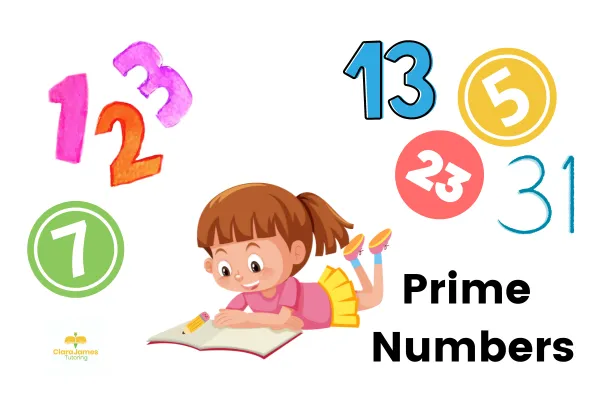Clara James Tutoring
BLOG POSTS

Prime Numbers and the 11+
Prime numbers are numbers with only two factors. This basically means numbers which you will only find in the 1 times table of their own times table.
I hope the end of term is enjoyable and not just a manic rush with all the end of term activities!
A couple of people have mentioned non-verbal reasoning recently. There are 2 games I would like to suggest. The first is called ‘Sets’ and is available on Amazon for about 7 or 8 pounds. The idea is to try and recognise sets, but only 1 thing can change to create a set. An appalling description but it is a pretty good game and if spotting differences is an issue, it’s a ‘gentle’ way in to practicing them.
The other game (and I’ll put a disclaimer her – it is highly addictive!) is Rummikub, which is also available on Amazon. In this one you have to make sequences of numbers. Sometimes in the past I’ve made it slightly harder to say you can also incorporate a run of prime numbers or multiples to create a sequence, providing it still follows the other rules of the game.

Prime numbers are numbers with only two factors. This basically means numbers which you will only find in the 1 times table of their own times table. For example, 5 is prime because it is only in the 5- and 1-times table, where are 10 is in the 1, 2, 5, 10 times tables so it wouldn’t be prime.
If you are practicing the prime numbers (I’ll put a 100 number grid in the 11+ resources today) create a visual table to help you to solve them quickly until you gain confidence.
Start by colouring square number 1.
1 is not prime as it is only in the 1x table and no other (so it has 1 factor instead of the necessary 2).
Now colour in everything in the 2x tables apart from 2. So, colour in the column below the 2 (but not the 2), the column where every number ends in 4. The 6 column, the 8 column, and the 10’s column.
2 is the only even prime number
Next, we’ll colour in everything in the 5’s column APART from number 5.
Now we need to colour in all the multiples of 3 apart from 3. The easiest ways to do this is just colour in the ones you know which are multiples of 3 or to count on 3.
However, if you’re not sure any number where the digits add together to create a number that is in the 3x table, it will be a multiple of 3.
Example: 96
9+6=15 (in the 3 times table but just to be sure add the digits in 15 together)
1+5 =6, also in the 3x table.
However, 43
4+3 =7
7 isn’t in the 3x table so neither is 43.
We completed the 4’s when we coloured in the 2’s so we don’t need to worry about that, and the 5’s were also completed.
The 6’s were completed when we coloured in the 3’s so that’s done, so now we need to do the 7’s.
Unfortunately, there are no tricks for this one. It will be a case of just colouring in the ones you know and counting on for the ones in between. However, fortunately there won’t be many to do.
We’ve done the 8’s when we completed the 2’s or 4’.
The 9’s were done with the 3’s.
The 10’s were completed with the 5’s.
If there are any in the 11x table left, feel free to colour this in.
The 12’s were done with the 2’s, 3’s, 4’s, 6’s,
What’s left not coloured in, are the prime numbers. You might choose to make those numbers into something more visually appealing or you may just look at those sheets for guidance, the choice is yours.
Additionally, you may choose to use them in a word search or a game of hangman to help solidify the answers in your head.
Have a great week,
Dawn
If you want details of the 11+ course, there are still 7 places left. The details are here:
Morning,
I hope the week is going well.
So many people seem to be doing D of E and work experience
at the moment, good luck if that’s you and if you’re at Marlow Camp next
fingers crossed for good weather!
I’ve just finished a lesson on division. It seems to be
something that messes with the brains of so many people.
I found it got easier when I stopped thinking about it as
division and instead thought about it as multiplication. So, if for example I
had the question 396 divided by 3, I would look at it as 3x what = 3. My answer
would be 1. How many times would I need to multiply 3 to get to 9, (my answer
would be 3). Then 3x something = 6. My answer would be 2. Giving me the overall
answer of 132.
I know that’s a really simple example but hopefully it explains
my point.
Thankfully in schools they don’t often seem to need to do
long division, but I’ve worked with a couple of adults (generally nurses for
some reason) who have needed it.
I think I’ll explain this one in a video, as it will be too
complicated to explain it with words as bits get put all over the place. I hope
this makes sense though:
Enjoy the rest of the week and speak soon,
Dawn

